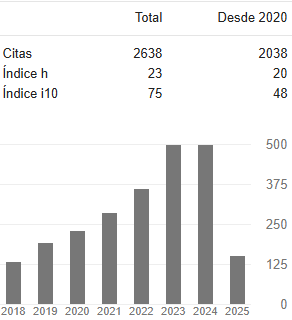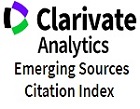The lignin of the Angustifolia Kunth guadua incorporated into the substrate of the fungus pleurotus ostreatus
DOI:
https://doi.org/10.31908/19098367.4009Palabras clave:
Lignina, hongo Pleurotus ostreatus, guadua Angustifolia kunthResumen
Lignin is extracted from the angustifolia Kunth guadua by the process of digestion with NaOH in a reactor at high pressure and temperature, separating it from the cellulose. Purified lignin is characterized by the infrared spectroscopy that gives the functional characteristics of this one. Using the technique of microbial culture, the sowing is done in Petri dishes of the strain of the fungus Pleurotus ostreatus on agar. Here the time taken by the mycelium to cover the entire Petri dish is determined. This seed is then repeated, but by adding different amounts of lignin, determining the time to cover the Petri dishes, lignin is found to inhibit the growth of the mycelium, and from 40% of lignin in the substrate there is no growth, which is equivalent to the average lethal dose. In each box the area covered by the fungus is measured, being considered as future potential in the non-food industry of the coffee region of the country.
Descargas
Referencias
Martínez Y., P. N., Guarnizo F., A. y Rodríguez E., J. A. Aprovechamiento de la lignina, obtenida de fuentes no madereras del departamento del Quindío, por métodos biotecnológicos. Proyecto de investigación No. 296, 110 páginas, Universidad del Quindío, Armenia, Quindío, Colombia. 2010.
Boeriu, C. G., Bravo, D., Gosselink R., A., & Van Dam J., E.G. “Characterisation of structure-dependent functional properties of lignin with infrared spectroscopy”. Industrial Crops and Products. 20, pp. 205–218. 2004.
Martínez Y., P. N., Guevara B., C.A., Rodríguez E., J.A., Rose P., CH., Ríos C., C.A. Aprovechamiento Industrial de los Residuos y Desechos Celulósicos Generados en el Departamento del Quindío. Proyecto de Investigación No. 199, Universidad del Quindío. 2004.
Díaz T., P. C. Obtención de Vainillina a Partir de los Subproductos Obtenidos en la Degradación de la Lignina Contenida en la Guadua, Angustifolia Kunt. Proyecto de grado, programa de Química, Facultad de Ciencias Básicas y Tecnologías, Universidad del Quindío, Colombia.2009.
Pouteau, C., Dolea, P., Cathala, B., Averous, L., and Boquillonb, N. “Antioxidant properties of lignin in polypropylene”. Polymer Degradation and Stability, 81, pp. 9–18. 2003.
Martínez Y., P. N.; Villa Z., D. A. y Garcia D.O, J. J. Ciencia y Tecnología de Hongos Comestibles. Editorial Elizcom, Armenia (Quindío), Colombia.2008.
Miles, P. G., y Chang, S. “Biología de las Setas- Fundamentos básicos y acontecimientos actuales”. Editorial World Scientific, 1ª edición en español, Bogotá, Colombia. 1999.
Kosjek, T., Heath, E., Petrovic, M., Barceló, D. Mass spectrometry for identifying pharmaceutical biotransformation products in the environment. TrAC Trends in Analytical Chemistry 26(11), 1076-1085. 2007.
Saavedra, M. “Biodegradación de alperujo utilizando hongos del género Pleurotus y anélidos de la especie Eisenia foetina”. Universidad de Granada, Instituto de Biotecnología, Tesis Doctoral, Granada, México. Tomado de Internet el 5 de enero del 2007 http://hera.ugr.es/tesisugr/16615591.pdf. 2007.
Guarín, J. Y Ramírez, A. “Estudio de factibilidad técnico-financiero de un cultivo del hongo Pleurotus ostreatus en Cundinamarca”. Pontificia Universidad Javeriana, Facultad de Ingeniería, programa de Ingeniería Industrial, trabajo de grado. Bogotá D.C. Tomado de Internet en febrero del 2008. http:// www.javeriana.edu.co/biblos/tesis/ingenieria/tesis79.pdf. 2004.
Rowell, R. M., Young, R. A., Rowell, J.K. Paper and Composites from Agro-Based Resources. CRC Press, Lewis Publishers, USA. 1997.
Descargas
Publicado
Número
Sección
Licencia
Derechos de autor 2019 Entre Ciencia e Ingeniería

Esta obra está bajo una licencia internacional Creative Commons Atribución-NoComercial 4.0.



















